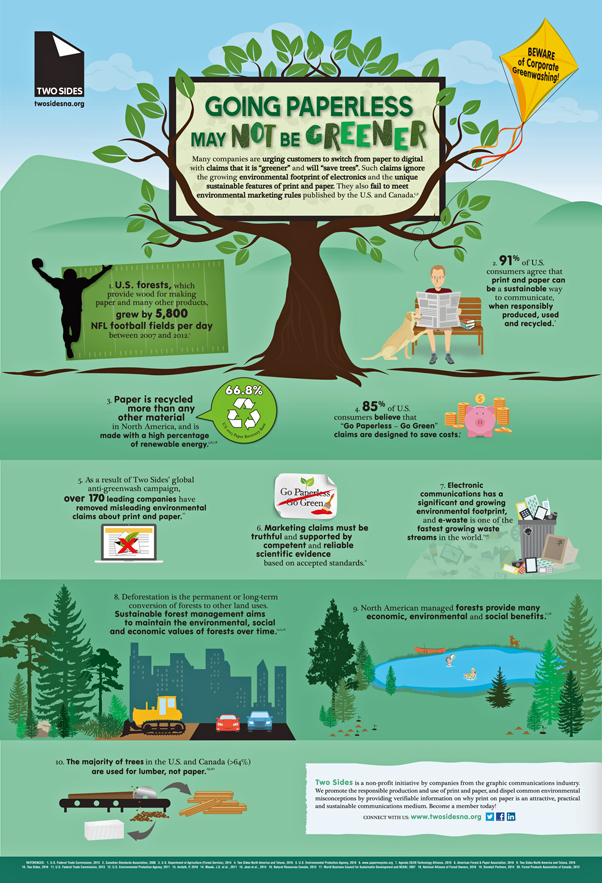Going Paperless May Not Be Greener
Going Paperless May Not Be Greener
Two Sides North America releases new infographic to celebrate Earth Day.
Two Sides North America, Chicago, Ill., USA, will celebrate Earth Day this Saturday (April 22, 2017) with the release of an engaging new infographic on why Going Paperless May Not Be Greener.
The new infographic (at the ned of this article) is designed to expose corporate greenwashing due to misleading environmental claims like "go green – go paperless" and bust key myths about the switch from paper to digital. The infographic spotlights key facts, including:
- U.S. forests grew by 5,800 NFL football fields per day between 2007 and 2012 due to sustainable forestry practices.
- 91% of U.S. consumers surveyed agree that print and paper can be a sustainable way to communicate when responsibly produced, used, and recycled.
- Paper is one of the most recycled products in North America with recovery rates of 66% and higher.
- •Electronic communications have a significant and growing environmental footprint that cannot be ignored by corporations.
- 85% of U.S. consumers surveyed agree that "go green – go paperless" claims are designed to save costs.
"The objective of this new infographic is to make people realize that most environmental claims related to going paperless are based on marketing and cost reduction tactics rather than verifiable and specific scientific facts – a requirement of the Green Guides published by the U.S. Federal Trade Commission," said Phil Riebel, president of Two Sides North America. "As a result, more than 170 leading corporations across the globe, including many of the Fortune 100, have removed such claims due to our anti-greenwash campaign, which has been running since early 2012."
Two Sides is an independent, non-profit organization created to promote the responsible production, use, and sustainability of print and paper. Two Sides is active globally in North America, Europe, Australia, South Africa, Brazil, and Colombia. Its members span the entire print and paper value chain, including forestry, pulp, paper, inks and chemicals, pre-press, press, finishing, publishing, printing, envelopes, and postal operators.
TAPPI
http://www.tappi.org/

